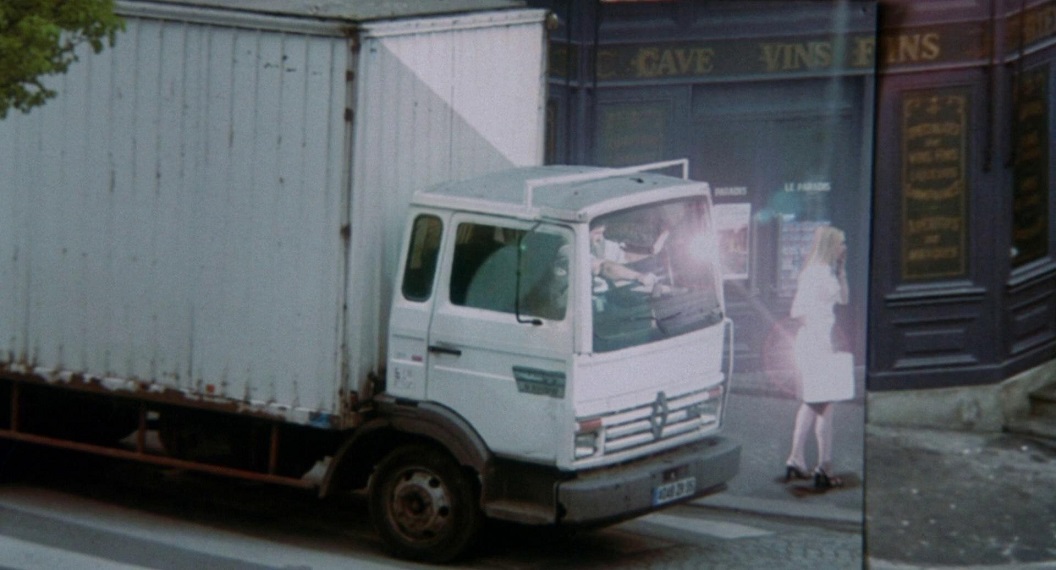NOAH BERLATSKY AT 'EVERYTHING IS HORRIBLE' FINDS JOY IN DE PALMA'S FEMME FATALE

In an essay titled "Femme Fatale And The Joy of Castration," Everything Is Horrible's Noah Berlatsky concludes: "When the movie first came out, many critics were put off by the combination of gratuitous eroticism and deliberate narrative incoherence. The truck goes off its path just like the movie keeps going off of its trajectory—the protagonist switches lives, jumps into the future seven years, goes back in time, conflates dream and reality.
"But the sex and the silly serendipity are inextricable. De Palma turns visual pleasure—the luxurious vision of water pouring out of the bathtub; split screen shots showing the same scene from multiple angles so it becomes a cubist abstraction; the camera swooping up to look down into an interrogation room; the extreme close up of Laure’s eyes; multiple explicit sex scenes—into isolated fragments of anti-plot, which direct your gaze to a here that goes both everywhere and nowhere. Instead of trying to master visual pleasure with narrative, Femme Fatale revels in the way the femme fatale releases the film from sequence, logic, and ultimately even from misogyny. De Palma, that most faithful of Hitchcock disciples, tosses away narrative mastery, and with it the master's paranoia. What he's left with is a pleasure that, despite all the sex, feels so innocent you almost have to call it joy."
Here's a portion from the beginning of Berlatsky's essay:
Brian De Palma's Femme Fatale (2002) is a kind of inverse body double of his earlier film Body Double (1984). Both movies are obsessed with undermining, or castrating, the male gaze. Where Body Double frames the male viewer as impotent and frozen outside the narrative, though, Femme Fatale instead constructs a female viewer whose usurpation of the male position causes the film narrative to fragment into an eroticized stasis of fantasy and dream.The movie is ostensibly a noir in the tradition of Double Indemnity, which our seductress Laure (Rebecca Romijn) is watching (nude, her image superimposed on the screen within a screen) in the first scene. Laure is point person for a heist in which she is supposed to steal diamonds worn (or mostly not worn) by model Veronica (Rie Rasmussen) at a Cannes premiere. However, Laure double crosses her partners. Then things get odd.
Femme fatales in Hollywood cinema traditionally challenge the male dominance of look and plot. In her classic essay "Visual Pleasure and Narrative Cinema," Laura Mulvey argues that Hollywood films link male viewer and male protagonist as masterful gazers, whose look drives and orders the story arc. Women, in contrast, connote "to-be-looked-at-ness" they are "displayed as sexual object" and "erotic spectacle." The gaze possesses woman, which allows the (male) gazer in the theater the illusion of mastery. At the same time, though the spectacle of woman tends "to freeze the flow of action in moments of erotic contemplation." Woman is thus the prize of narrative mastery and a sensuous ice pick (or prick) in the eye of that same mastery. She is the prize that empowers narrative thrust and the twinkling treasure that leads the gaze (and other bits) off course.
Classic Hollywood films like Double Indemnity use the femme fatale to take advantage of this doubled gaze to heighten both impotence and empowerment. The erotic spectacle of Phyllis (Barbara Stanwyck) hijacks the male gaze and the male driven plot so that good guy Walter (Fred MacMurray) is diverted from the straight and narrow. Instead of his gaze driving the plot, her gazed-at-ness takes the wheel, steering him towards perversion, iniquity, and ultimately death. The film becomes a battle between the erotic distraction of the femme fatale and the righteous vision of the male. When Walter shakes off the glamour and does the right thing (by killing Phyllis) he reasserts his potency—though at the cost of his own life. That's the price of getting bogged down in the venus of spectacle.
Femme Fatale sort of reiterates this narrative tension, sort of parodies it, and sort of blows it up. Laure is an erotic spectacle which seizes control of the plot in numerous ways—first of all by literally seducing Veronica and ravishing her in the bathroom, pulling off her diamonds so her accomplice can slip substitutes under the stall. It's a flamboyantly queer literalization of the way that the femme fatale queers cinematic narratives.
Read the rest at Everything Is Horrible.



